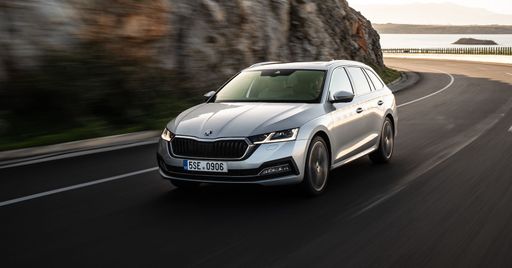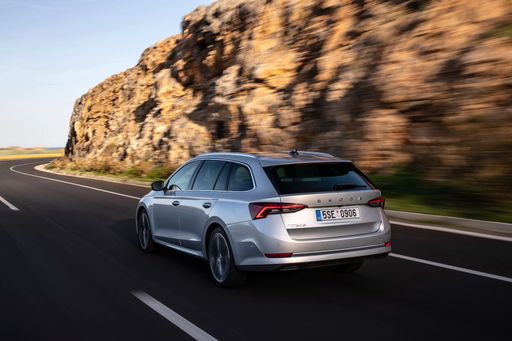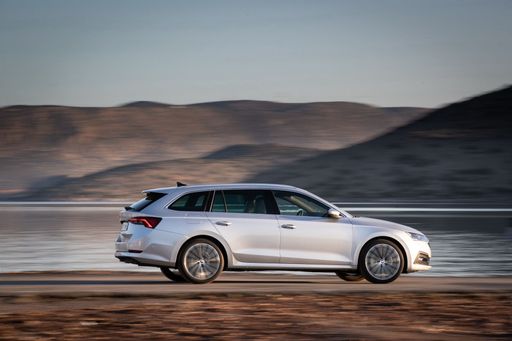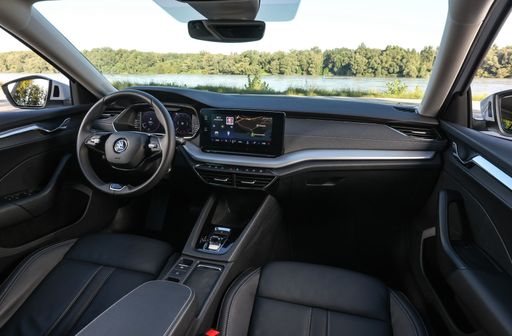Alfa Romeo Junior vs Skoda Octavia Combi – Which model is better for everyday use?
Everyday use, family trips or long-distance drives – here’s where the differences show.
Discover whether Alfa Romeo Junior or Skoda Octavia Combi fits your lifestyle better.
Costs and Efficiency:
When it comes to price and running costs, the biggest differences usually appear. This is often where you see which car fits your budget better in the long run.
Skoda Octavia Combi has a barely noticeable advantage in terms of price – it starts at 24400 £, while the Alfa Romeo Junior costs 25700 £. That’s a price difference of around 1251 £.
Fuel consumption also shows a difference: Skoda Octavia Combi manages with 4.40 L and is therefore slight more efficient than the Alfa Romeo Junior with 4.80 L. The difference is about 0.40 L per 100 km.
Engine and Performance:
Under the bonnet, it becomes clear which model is tuned for sportiness and which one takes the lead when you hit the accelerator.
When it comes to engine power, the Alfa Romeo Junior has a slight edge – offering 280 HP compared to 265 HP. That’s roughly 15 HP more horsepower.
In acceleration from 0 to 100 km/h, the Alfa Romeo Junior is a bit quicker – completing the sprint in 5.90 s, while the Skoda Octavia Combi takes 6.50 s. That’s about 0.60 s faster.
In terms of top speed, the Skoda Octavia Combi performs somewhat better – reaching 250 km/h, while the Alfa Romeo Junior tops out at 206 km/h. The difference is around 44 km/h.
There’s also a difference in torque: Skoda Octavia Combi pulls slight stronger with 370 Nm compared to 345 Nm. That’s about 25 Nm difference.
Space and Everyday Use:
Cabin size, boot volume and payload all play a role in everyday practicality. Here, comfort and flexibility make the difference.
Both vehicles offer seating for 5 people.
In curb weight, Skoda Octavia Combi is barely noticeable lighter – 1366 kg compared to 1380 kg. The difference is around 14 kg.
In terms of boot space, the Skoda Octavia Combi offers clearly perceptible more room – 640 L compared to 415 L. That’s a difference of about 225 L.
In maximum load capacity, the Skoda Octavia Combi performs noticeable better – up to 1700 L, which is about 420 L more than the Alfa Romeo Junior.
When it comes to payload, Skoda Octavia Combi clearly perceptible takes the win – 534 kg compared to 420 kg. That’s a difference of about 114 kg.
Who comes out on top?
Overall, the Skoda Octavia Combi shows itself to be outperforms in nearly all aspects and secures the title of DriveDuel Champion.
It convinces with the more balanced overall package and proves to be the more versatile choice for everyday use.
 @ Škoda Auto a.s. / Škoda Storyboard
@ Škoda Auto a.s. / Škoda Storyboard
Skoda Octavia Combi
Alfa Romeo Junior
The Alfa Romeo Junior captures the essence of Italian design with its sleek lines and compact dimensions, making it an icon of elegance and performance. With a spirited driving experience and a charming retro aesthetic, it appeals to enthusiasts and casual drivers alike. This delightful car embodies the brand's rich heritage while remaining a fun and engaging option for those seeking a unique automotive experience.
details @ Alfa Romeo / Stellantis Media
@ Alfa Romeo / Stellantis Media
 @ Alfa Romeo / Stellantis Media
@ Alfa Romeo / Stellantis Media
 @ Alfa Romeo / Stellantis Media
@ Alfa Romeo / Stellantis Media
Skoda Octavia Combi
The Skoda Octavia Wagon impresses with its spacious interior, offering ample room for both passengers and luggage. It maintains a sleek and modern design, making it a stylish choice for families and professionals alike. The vehicle boasts an efficient engine range, providing a smooth and responsive driving experience.
details @ Škoda Auto a.s. / Škoda Storyboard
@ Škoda Auto a.s. / Škoda Storyboard
 @ Škoda Auto a.s. / Škoda Storyboard
@ Škoda Auto a.s. / Škoda Storyboard
 @ Škoda Auto a.s. / Škoda Storyboard
@ Škoda Auto a.s. / Škoda Storyboard
 @ Škoda Auto a.s. / Škoda Storyboard
@ Škoda Auto a.s. / Škoda Storyboard
 @ Alfa Romeo / Stellantis Media
@ Alfa Romeo / Stellantis Media
|
 @ Škoda Auto a.s. / Škoda Storyboard
@ Škoda Auto a.s. / Škoda Storyboard
|
|
|
|
Costs and Consumption |
|
|---|---|
|
Price
25700 - 41600 £
|
Price
24400 - 42300 £
|
|
Consumption L/100km
4.8 - 5.4 L
|
Consumption L/100km
4.4 - 6.9 L
|
|
Consumption kWh/100km
15.1 - 17.5 kWh
|
Consumption kWh/100km
-
|
|
Electric Range
344 - 410 km
|
Electric Range
-
|
|
Battery Capacity
0.4 - 51 kWh
|
Battery Capacity
-
|
|
co2
0 - 119 g/km
|
co2
113 - 157 g/km
|
|
Fuel tank capacity
44 - 45 L
|
Fuel tank capacity
45 - 55 L
|
Dimensions and Body |
|
|---|---|
|
Body Type
SUV
|
Body Type
Estate
|
|
Seats
5
|
Seats
5
|
|
Doors
5
|
Doors
5
|
|
Curb weight
1380 - 1689 kg
|
Curb weight
1366 - 1534 kg
|
|
Trunk capacity
340 - 415 L
|
Trunk capacity
640 L
|
|
Length
4173 mm
|
Length
4698 - 4709 mm
|
|
Width
1781 mm
|
Width
1829 mm
|
|
Height
1505 - 1538 mm
|
Height
1455 - 1468 mm
|
|
Max trunk capacity
1205 - 1280 L
|
Max trunk capacity
1700 L
|
|
Payload
390 - 420 kg
|
Payload
471 - 534 kg
|
Engine and Performance |
|
|---|---|
|
Engine Type
Electric, Petrol MHEV
|
Engine Type
Petrol, Petrol MHEV, Diesel
|
|
Transmission
Automatic
|
Transmission
Automatic, Manuel
|
|
Transmission Detail
Dual-Clutch Automatic, Reduction Gearbox
|
Transmission Detail
Dual-Clutch Automatic, Manual Gearbox
|
|
Drive Type
Front-Wheel Drive, All-Wheel Drive
|
Drive Type
Front-Wheel Drive, All-Wheel Drive
|
|
Power HP
136 - 280 HP
|
Power HP
116 - 265 HP
|
|
Acceleration 0-100km/h
5.9 - 9.1 s
|
Acceleration 0-100km/h
6.5 - 10.7 s
|
|
Max Speed
150 - 206 km/h
|
Max Speed
203 - 250 km/h
|
|
Torque
230 - 345 Nm
|
Torque
220 - 370 Nm
|
|
Number of Cylinders
3
|
Number of Cylinders
4
|
|
Power kW
100 - 207 kW
|
Power kW
85 - 195 kW
|
|
Engine capacity
1199 cm3
|
Engine capacity
1498 - 1984 cm3
|
General |
|
|---|---|
|
Model Year
2024 - 2025
|
Model Year
2024 - 2025
|
|
CO2 Efficiency Class
A, C, D
|
CO2 Efficiency Class
E, F, D, C
|
|
Brand
Alfa Romeo
|
Brand
Skoda
|
What drive types are available for the Alfa Romeo Junior?
Available configurations include Front-Wheel Drive or All-Wheel Drive.
The prices and data displayed are estimates based on German list prices and may vary by country. This information is not legally binding.
